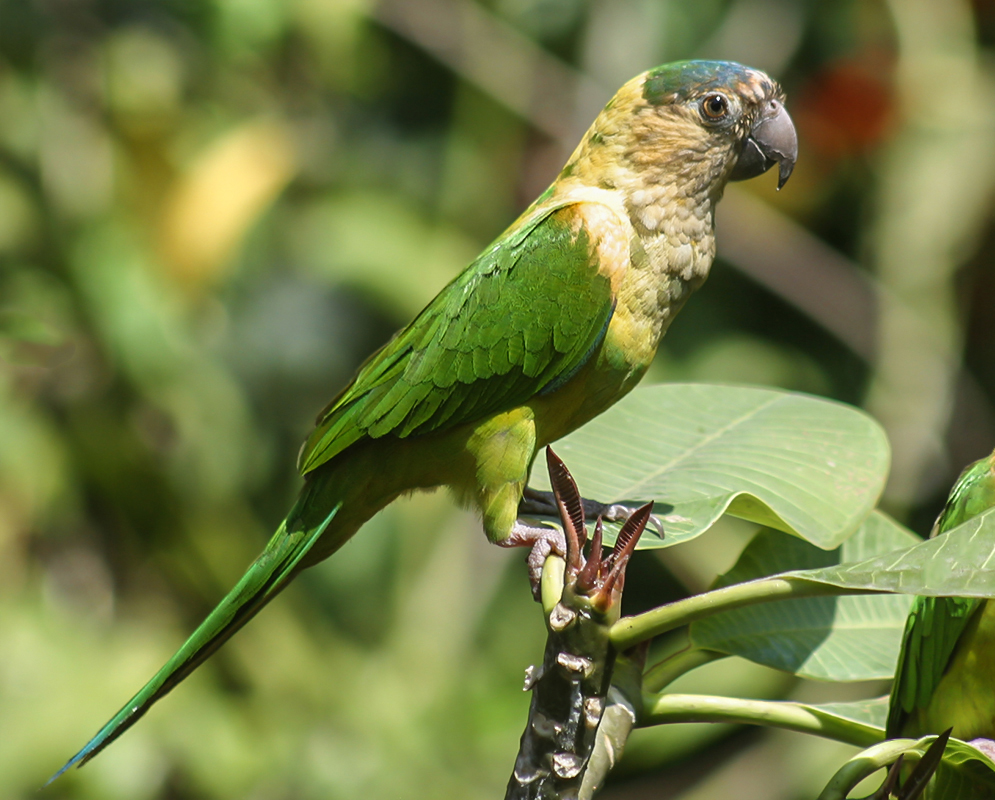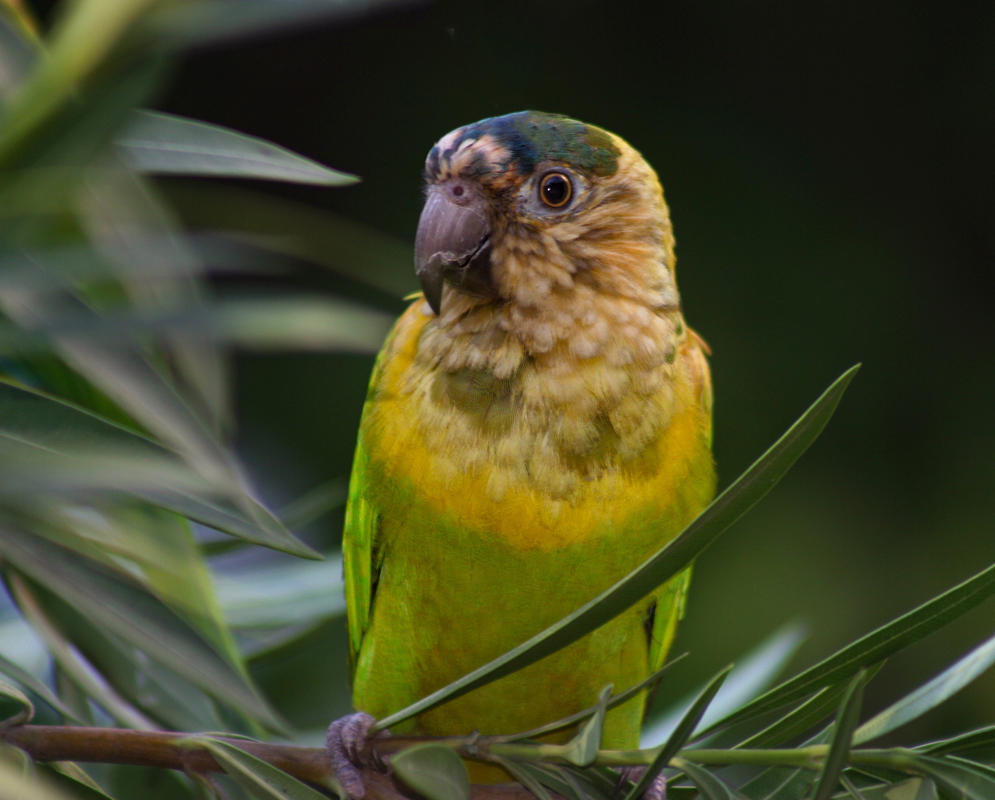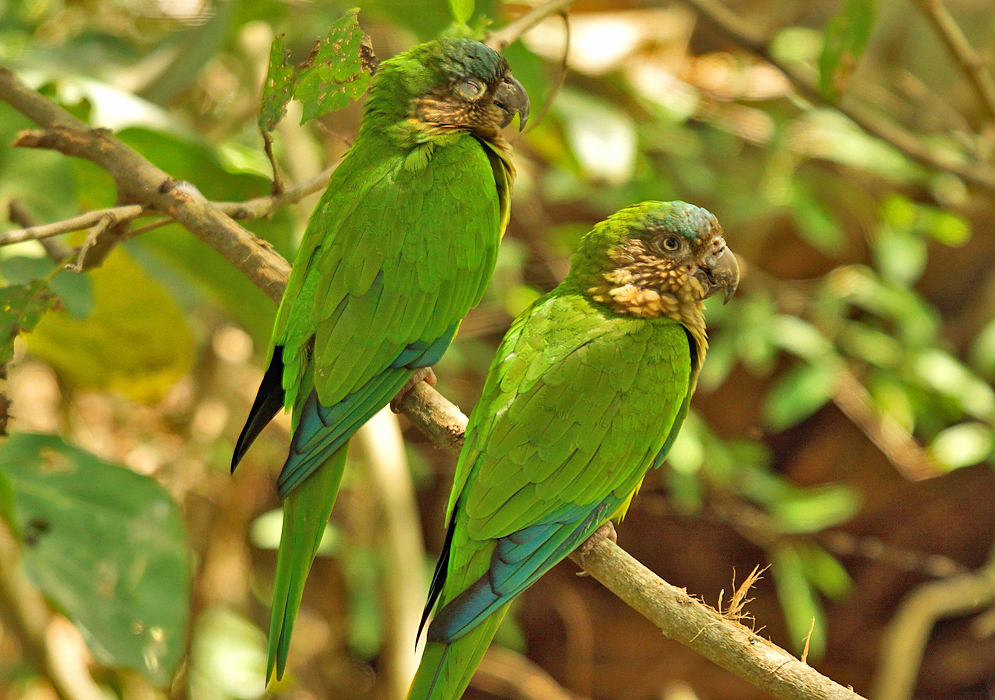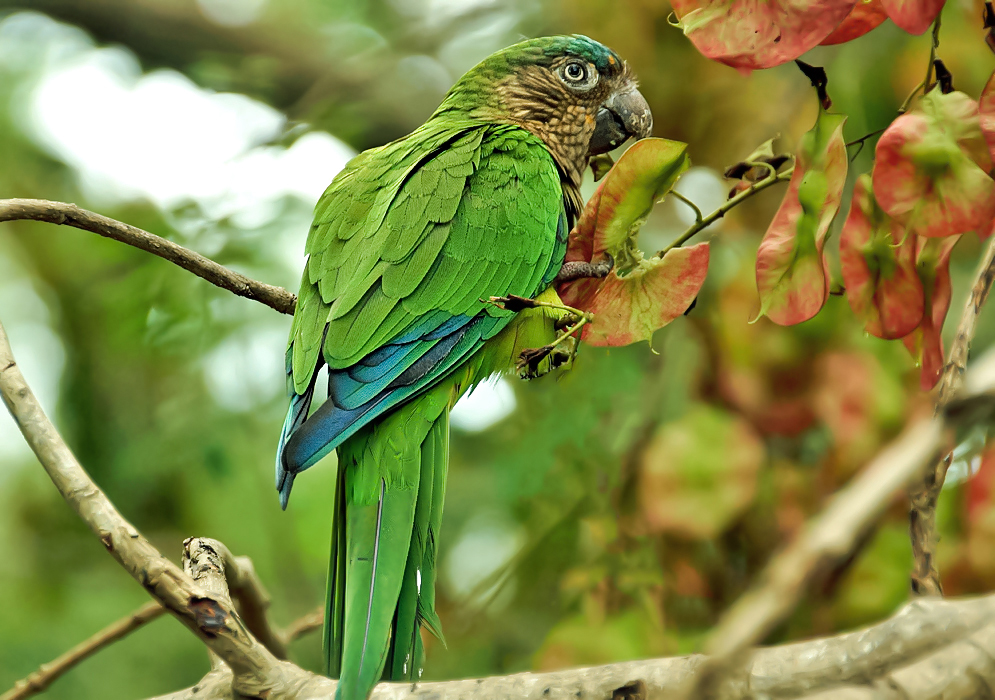This post has 11 Simple Fields-fields attached. Show fields.

The Brown-throated Parakeet, belongs to the family Psittacidae, encompassing African and New World parrots. This species demonstrates a wide geographical spread, inhabiting regions such as Costa Rica, Panama, the northern mainland of South America, and various islands off the South American coast. Physically, these parakeets are characterized by a length of approximately 9.1 to 11 inches and a weight ranging between 2.7 to 3.6 ounces. Notably, both sexes exhibit similar plumage. Adult birds of the nominate subspecies E. p. pertinax are distinguished by their yellow forehead, face, and chin, complemented by a green crown, nape, and upperparts. Their breast presents a dull olive hue, while their belly is a vivid grass green with a distinctive orange patch at its center. The wings and tail feathers of these parakeets predominantly display green with dullish blue edges and tips. In contrast, immature birds possess minimal yellow coloring. The Brown-throated Parakeet demonstrates adaptability in its choice of habitat, residing in diverse landscapes such as savannas, arid scrublands, mangroves, tropical deciduous forests, gallery forests, evergreen forests, as well as cultivated areas and pastures with some remaining trees. In Colombia, they are found up to an elevation of approximately 8,500 feet, but they generally inhabit areas below 3,900 feet elsewhere. Their diet primarily consists of seeds, fruits, nuts, flowers, leaves, and occasionally insects. A study in Venezuela indicated that up to 70% of their food derived from human-planted sources, rather than wild ones. This parakeet species is known to significantly impact agriculture, posing as a pest particularly in maize fields and other crops in Colombia and Venezuela, as well as in fruit plantations in the Leeward Antilles. They have also been observed feeding on cactus.
The breeding habits of the Brown-throated Parakeet vary across its range. Nesting can occur almost any time of the year in Suriname and the Antilles, and typically from February to April in Colombia and Venezuela. These birds often create nests in cavities within arboreal termite nests, particularly those from the genus Nasutitermes, as well as in natural cavities in trees, cliff faces, or earthen banks. It is common for several pairs to share a single rotten tree for nesting. The clutch size ranges from two to seven eggs, with an incubation period of about 23 days in captivity and a fledging time of 36 to 37 days in the wild. The International Union for Conservation of Nature (IUCN) has classified the Brown-throated Parakeet as a species of Least Concern. This assessment reflects the bird's vast range and an estimated stable population of at least five million mature individuals. The subspecies E. p. tortugensis is in decline, and the mainland Venezuela populations face persecution due to their crop-feeding habits. Photographed in Barranquilla, Colombia.











